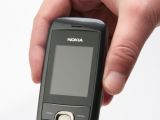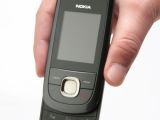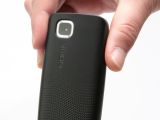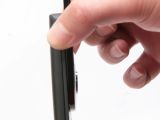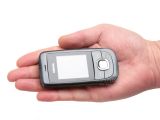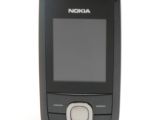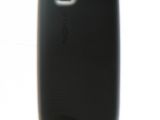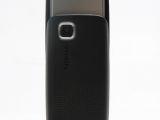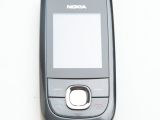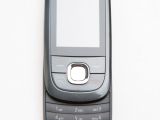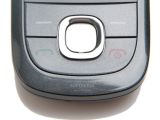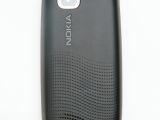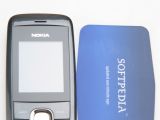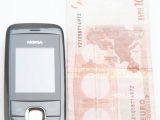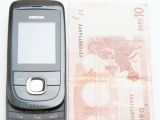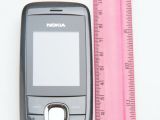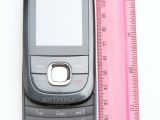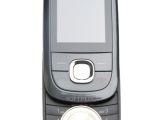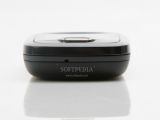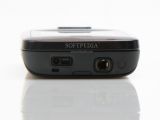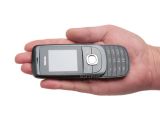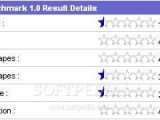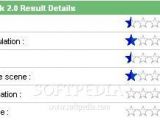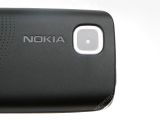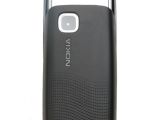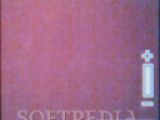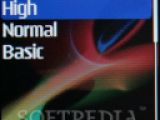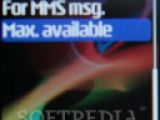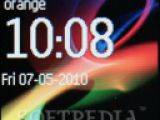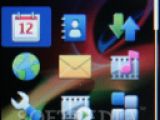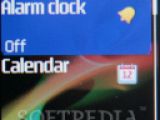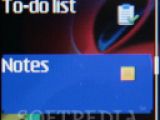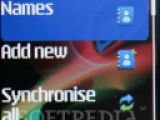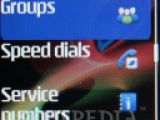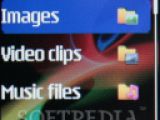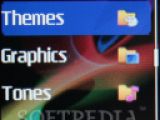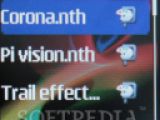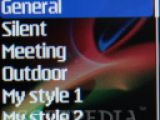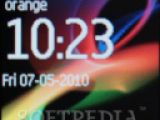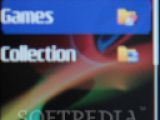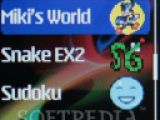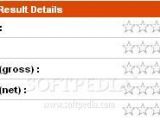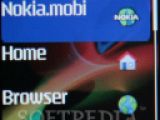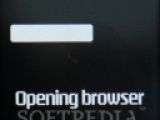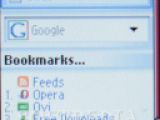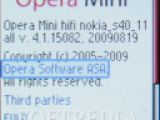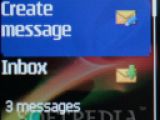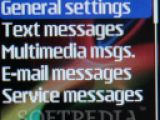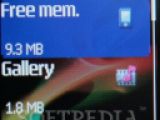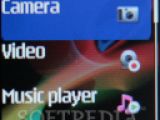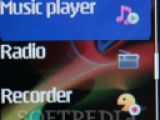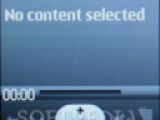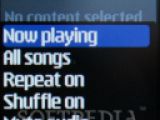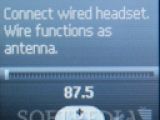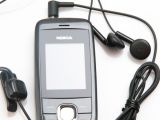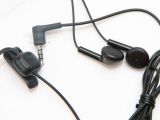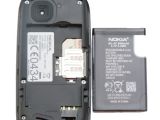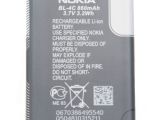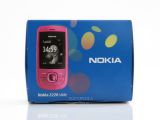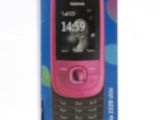Trying to take over the mass mobile phone market, Nokia launched a new range of cheap handsets at a very low price. I'll emphasize the latter as very unusual, the Finnish manufacturer being renowned for their not so cheap prices even for its low budget line-up. The phone in question now is called Nokia 2220 slide and looks, feels and functions like a common slider phone with basic features. If you expect anything else than being able to talk on the phone, then you should look elsewhere and avoid buying this handset.
The device lacks even the most standard features that we are used to have in any kind of mobile phone, such as: memory card, Bluetooth or USB port for PC synchronization. Even though you will probably not find all these features embedded into a single low-budget handset, at least one of those can be used to transfer files. The only possible way to send out the pictures you've made with the included camera is by MMS or sharing them on the Internet, but that requires additional data transfer costs.
Announced in November 2009, Nokia 2220 slide was made available on the market in February 2010 and can be bought for only USD60 without any subscription. Color variation is one of the strong points of the device, as users can choose one of the six available colors: Hot Pink, Graphite, Turquoise, Warm Silver, Purple and Blue.
style="color: rgb(170,51,51)">Design
First warning for people that do care about their phone's look: don't expect too much from Nokia 2220 slide, as you'll be disappointed. Still, the handset can be reckoned as a standard slider of rather small dimensions: 97.4 x 47 x 15.9 mm. Weighing exactly 93.5g, Nokia 2220 slide is no bigger than a business card when it is closed. The rounded shape of the phone may remind someone of a pebble, but only by far. Surprisingly for its low price, the device hasn't been made from a cheap looking plastic. The front part is covered by shiny plastic that doesn't catches fingerprints at all, while the battery cover is made from a rather mat material.
The only thing that might hinder your vision over the display is the occasional grease that might be left on your screen after a phone call. The big rounded Navi-Key has been covered by a special paint that makes it look like metal, but in fact it's still made from plastic. There are only four keys that help users operate of slider: Accept and Reject calls, as well as two contextual keys. Clicking the middle of the Navi-Key works like Enter command. The only ports you will find on the phone have been placed on top side: 3.5mm jack port and the charger port. When slided, Nokia 2220 reveals a rather small keypad, with keys that aren't really separated and with mildly responsiveness. The plastic that covers the keypad is a little bit slippery, especially if your fingers are sweaty. The sliding mechanism seems pretty sturdy, but I have my doubts with the flimsy back cover, which is extremely thin. Thankfully, the device doesn't feature a memory card slot under the hood, so you won't need to pull it out too often. Overall, Nokia 2220 slide looks and feels like a regular slider phone, with nothing that will make it stand out from the crowd. There's no wow factor and such, but for a low-budget phone, the slider is not looking bad at all.style="color: rgb(255,102,0)">Display and Camera
Nokia 2220 slide includes a 1.8-inch TFT display that supports 65K colors and a 128x160-pixel resolution. This is one of the smallest displays and the only excuse for Nokia including such a downrated display is the fact that Nokia 2220 slide is a low-budget phone. At least the colors and contrast look pretty good, while the quality of the image on such a small display is pretty low. Sunlight eligibility is somewhat mildly, but dialing will not cause you any problems.
The VGA camera embedded in Nokia 2220 slide doesn't have any additional features, and to say the truth, I don't really understand why it has been included. If you care to do some pictures, you won't have enough space to storage too many (only about 10MB free and no memory card) and you won't be able to transfer any of the pictures to another phone or on your PC, as the phone lacks any connectivity tools (Bluetooth, IrDA, USB cable). There are no additional settings for the camera software and no dedicated key, so you will have to use the big Navi-Key button. I wasn't able to transfer any of the test pictures I've made, but taking into consideration that the maximum resolution that you can use is 640x480 pixels, there's really nothing to discuss. Even for a cheap phone, the camera is actually downrating the phone even more.style="color: rgb(153,204,0)">Menu and Software
Nokia 2220 slide runs on an Series 40 5th Edition platform with Feature Pack 1 Lite, which has been especially designed for the newest low-budget Nokia handsets. Stripped from all the goodies offered by S40 6th Edition interface, the platform remains the most user-friendly interfaces on the market, but it will probably suck on the design and customizing area. This time, there's no flash support included with the Web browser, but at least you will be able to use Opera Mini.
The handset has some useful applications, such as Alarm clock, Calendar, To-do list, Notes, Calculator, Stopwatch, Expense manager and Converter. You have only a few options to customize the menu, but you'll be able to designate any MP3 or AAC file as a ringtone. The phonebook can store up to 1,000 contacts, and each can be filled with up to two different phone numbers. The fonts can be customized, but only those displayed when opening the Contacts and Messaging sections. Also, some Java games come preinstalled – Club Pinball, Miki's World, Snake EX2 and Sudoku. The phone is compatible with Java MIDP 2.1 applications, but there is a limit to the size of any application that you might want to install on it, and that's the usual 1MB. This might be the case with most Java-compatible applications.style="color: rgb(153,51,102)">Communication
Nokia 2220 slide is fully compatible with GPRS and EDGE Class 10. Benchmarks revealed that the device underperformed when it came to data-transfer speeds (EDGE 128 Kbit/s download and 26Kbit/s upload), but that may greatly vary depending on the location and carrier.
The phone does not feature Bluetooth or microUSB connectivity. Synchronization with the PC is not possible as there are no ports for USB.In terms of messaging, the slider accepts standard text messages, MMS, as well as emails. The message client works with POP3, SMTP, and IMAP4 protocols.
The dual-band (GSM 900 / 1800) network-compatible slider has a good GSM signal reception. The sound is average in quality at both ends, but pretty low. The vibration alert is average, which means you won't miss too many phone calls if you keep it on the Silent profile.style="color: rgb(170,51,51)">Processor and Memory
The slider is powered by an ARM7 family processor running at speeds of up to 70 MHz. This is one of the lowest CPUs on the phone market at present, and it seems that it is still used into low-budget devices. The handset is a little bit laggy, especially when opening and closing applications, but also when browsing the menus.
The 2220 slide embeds 32 MB memory, but only about 10MB will be user free. Furthermore, the device does not include a microSD card slot or any kind of memory slot.style="color: rgb(255,102,0)">Multimedia
There's not much to tell about this area, as Nokia 2220 slide misses the storage space that enables owners to use it as a music player. The only thing you will be able to listen using the 3.5mm jack port is the Radio FM, which also includes the FM recording feature in some areas.
The poorly-wired stereo headset (WH-102) can be changed for better 3.5mm headphones, but I don't think it's worth doing it only to listen to the radio. Quality of the sound is disappointing, but expected nonetheless.style="color: rgb(153,204,0)">Battery
The 860 mAh Li-Ion (BL-4C) battery has an officially stated life expectancy of 496 hours in standby and of about five hours and 20 minutes in talk-time mode. Unfortunately, after one week of testing it, I was disappointed by the battery autonomy, as I needed to recharge the phone after two days even if I didn't use it too much. Basically, if a soft user needs to charge it once every two-three days, this means a very low battery autonomy.
style="color: rgb(153,51,102)">Impressions
I was pretty much disappointed by Nokia 2220 slide in terms of performance and feature-wise. Even for a low-budget phone, the device misses too many useful tools and includes others that are not so important. Still, for people that cannot afford better device, the slider can be a good choice if we take into consideration that in some areas it benefits from the Nokia Life Tools application.
The Good
The Bad
style="color: rgb(170,51,51)">Sales Package
Nokia 2220 slide handset Nokia Stereo Headset WH-102 Nokia Compact Charger AC-3 Nokia Battery BL-4C User guide
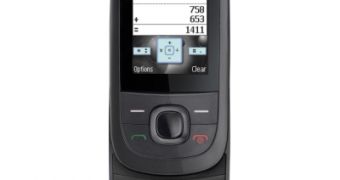
 14 DAY TRIAL //
14 DAY TRIAL // 
